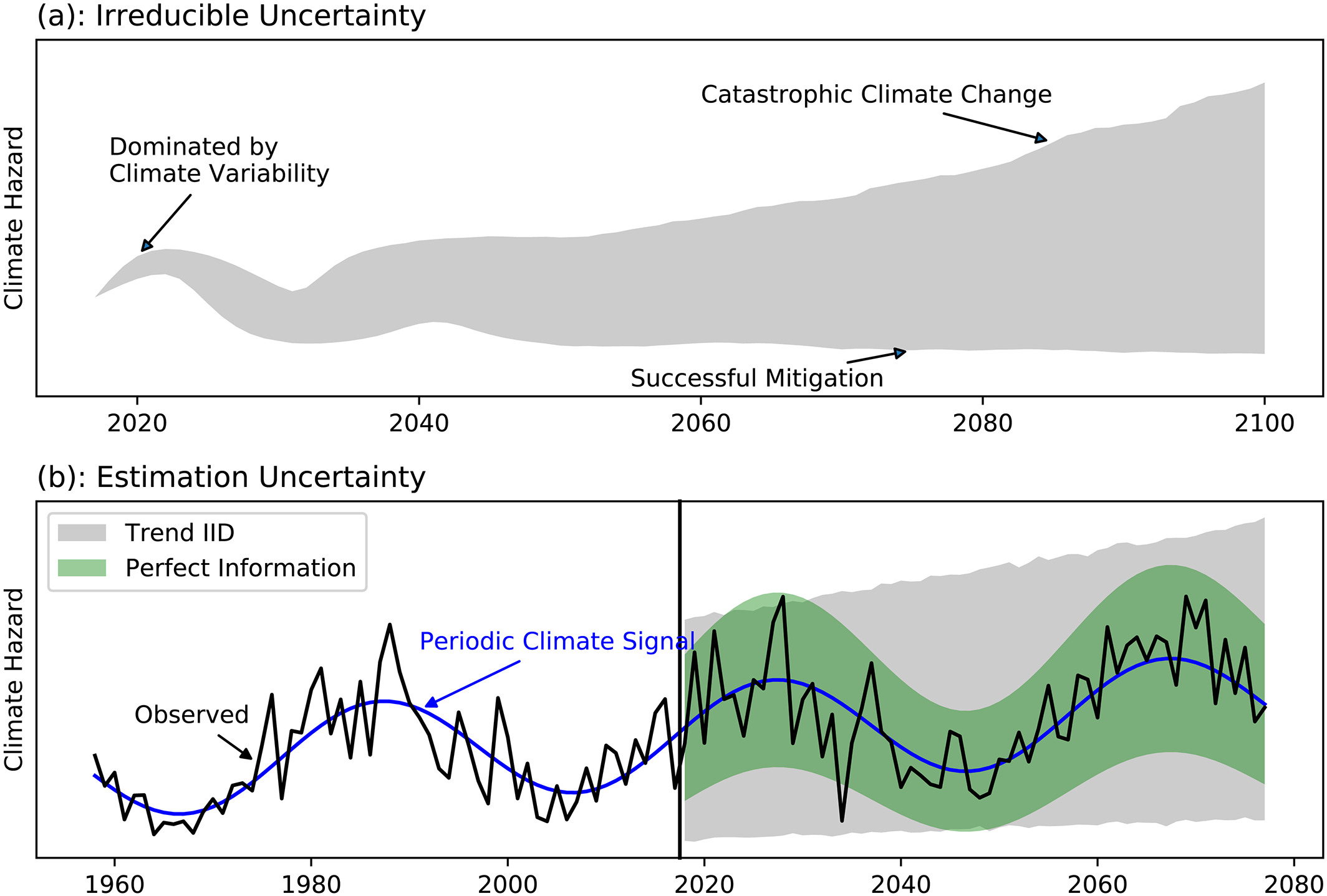The assessment and implementation of structural or financial instruments for climate risk mitigation requires projections of future climate risk over the operational life of each proposed instrument. A point often neglected in the climate adaptation literature is that the physical sources of predictability differ between projects with long and short planning periods: while historical and paleo climate records emphasize modes of variability, anthropogenic climate change is expected to alter their occurrence at longer time scales. In this paper we present a set of stylized experiments to assess the uncertainties and biases involved in estimating future climate risk over a finite future period, given a limited observational record. These experiments consider both quasi-periodic and secular change for the underlying risk, as well as statistical models for estimating this risk from an N-year historical record. The uncertainty of IPCC-like future scenarios is considered through an equivalent sample size N. The relative importance of estimating the short- or long-term risk extremes depends on the investment life M. Shorter design lives are preferred for situations where inter-annual to decadal variability can be successfully identified and predicted, suggesting the importance of sequential investment strategies for adaptation.
